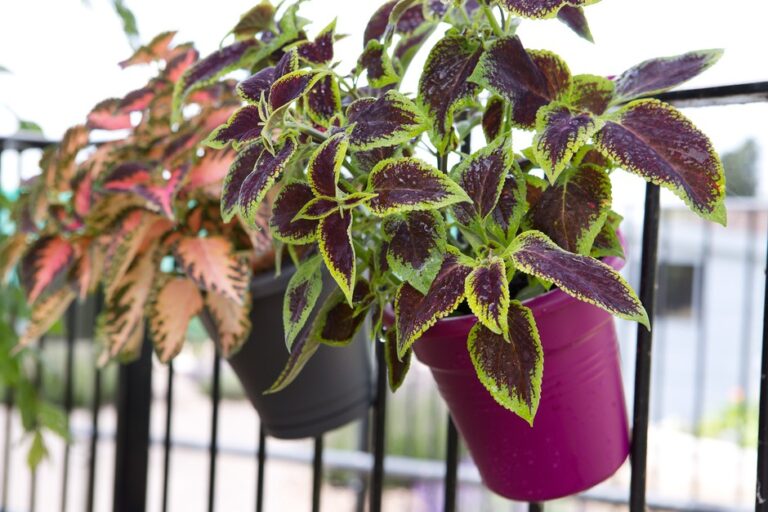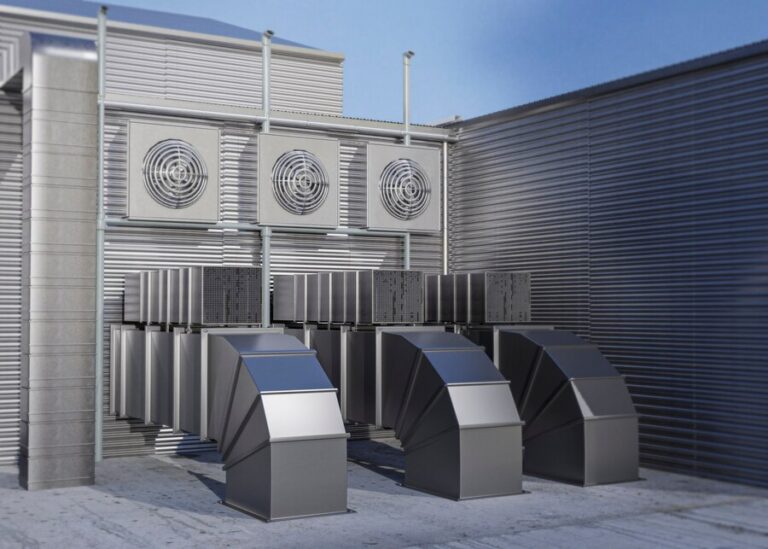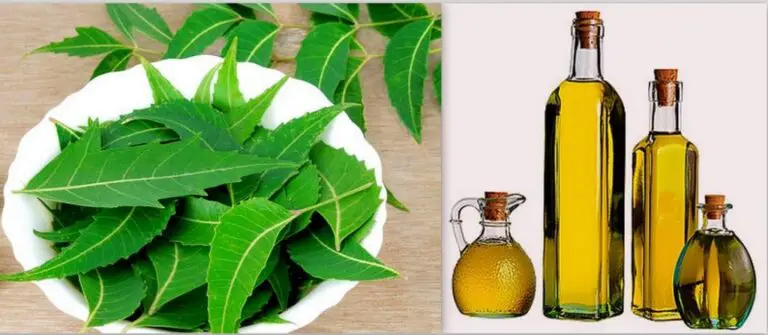Daily, Weekly, and Monthly Grow Checklists: A List of Tasks and Reminders to Keep Your Plants Healthy and Happy
Table of Contents
Understanding the Needs of Your Plants: Essential Factors for Healthy Growth
Plants are living organisms that rely on a combination of factors for healthy growth. Understanding these essential factors is crucial for cultivating strong and vibrant plants in your garden or indoor space. The first factor to consider is light. Plants need an adequate amount of sunlight to carry out photosynthesis, a process that converts light energy into chemical energy, enabling plants to grow and develop. Without sufficient light, plants may become weak and prone to disease. It is important to monitor the amount of sunlight your plants receive and position them in areas where they can receive the appropriate level of light for their specific needs. Additionally, factors such as temperature, humidity, and air circulation also play a vital role in plant growth. Different plants have different temperature preferences, so it is important to research and understand the optimum temperature range for the plants you are growing. Similarly, humidity levels should be adjusted based on the specific needs of your plants, as excessive moisture or dryness can lead to problems such as mold, insect infestations, or stunted growth. Lastly, proper air circulation is essential to prevent the buildup of stagnant air and to ensure that carbon dioxide is effectively exchanged, enabling plants to carry out photosynthesis efficiently.
| Timeframe | Task |
|---|---|
| Daily | – Check soil moisture levels |
| – Inspect plants for pests and diseases | |
| – Adjust grow light height and intensity | |
| – Monitor temperature and humidity levels | |
| – Water plants as needed, avoiding overwatering | |
| – Prune dead or yellowing leaves | |
| Weekly | – Conduct pH and nutrient level checks |
| – Clean grow room equipment and surfaces | |
| – Rotate plants for even light exposure | |
| – Check for signs of nutrient deficiencies | |
| – Inspect and clean air circulation systems | |
| – Scout for any signs of stress or abnormalities | |
| Monthly | – Flush growing medium to prevent salt buildup |
| – Conduct deep cleaning of grow room | |
| – Inspect and maintain grow light fixtures | |
| – Check and calibrate pH and nutrient meters | |
| – Evaluate plant growth and adjust nutrients | |
| – Review and adjust ventilation settings |

Preparing the Ideal Growing Environment: Setting the Stage for Success
Achieving healthy and vibrant plant growth begins with creating the ideal growing environment. By providing the optimal conditions, you can set the stage for success and ensure that your plants thrive. One crucial factor to consider is the temperature, as different plants have varying temperature preferences. Research the specific requirements of each plant in your garden to determine the ideal temperature range for their growth. Maintaining the correct temperature is particularly crucial when starting seeds or propagating plants, as any fluctuations can hinder germination or growth.
Another essential aspect of preparing the ideal growing environment is ensuring proper air circulation. Adequate air movement helps prevent the build-up of moisture and reduces the risk of fungal diseases in your plants. Consider using fans or opening windows to promote air circulation in your garden. Additionally, you can strategically position your plants to allow for better airflow, avoiding overcrowding and promoting healthy growth. By maximizing air circulation, you create an environment that minimizes the risk of pests and diseases, giving your plants the best chance at flourishing.
In the next section, we will explore the role of seasonal considerations in adapting your care routine to the changing seasons. Understanding how the weather and environmental conditions impact your plants is crucial for their overall well-being. Stay tuned to learn how to adjust your care practices throughout the year to optimize your plants’ growth and ensure their long-term success.
Seasonal Considerations: Adapting Your Care Routine to the Changing Seasons
As the seasons change, it is important to adapt your care routine to meet the evolving needs of your plants. Different seasons bring varying environmental conditions, such as temperature, humidity, and light intensity, which directly affect plant growth and development. By understanding these seasonal considerations and adjusting your care routine accordingly, you can ensure the continued health and vitality of your beloved plants.
During the summer months, when temperatures soar and the sun shines brightly, it is crucial to provide your plants with ample hydration. As the heat intensifies, water evaporates more rapidly from the soil, increasing the risk of dehydration for your plants. Therefore, it is essential to monitor the moisture levels in the soil and water your plants accordingly. However, be mindful not to overwater, as excessive moisture can lead to root rot and other water-related issues. By striking the right balance between under and overwatering, you can help your plants thrive during the summer season. Additionally, consider providing shade or protection from intense sunlight to prevent sunburn and scorching of leaves.
Here’s a table outlining considerations for adapting your care routine to the changing seasons
| Season | Considerations |
|---|---|
| Spring | – Increase watering frequency as plants enter their active growth phase. |
| – Begin fertilizing to support new growth and flowering. | |
| – Monitor for pests and diseases, which may become more active as temperatures rise. | |
| – Adjust lighting schedules for longer daylight hours. | |
| Summer | – Provide adequate shading or ventilation to prevent overheating of plants and soil. |
| – Water plants more frequently, as higher temperatures and increased sunlight can lead to faster evaporation. | |
| – Monitor for signs of heat stress and adjust watering and shading as needed. | |
| – Consider using mulch to retain soil moisture and regulate soil temperature. | |
| Fall | – Reduce watering frequency as temperatures cool and plant growth slows down. |
| – Gradually decrease fertilization to prepare plants for dormancy. | |
| – Monitor for early signs of frost and take precautions to protect sensitive plants. | |
| – Adjust lighting schedules to accommodate shorter daylight hours. | |
| Winter | – Minimize watering to prevent waterlogging and root rot in dormant plants. |
| – Protect plants from freezing temperatures with frost cloth or cold frames. | |
| – Consider bringing outdoor plants indoors or providing additional insulation. | |
| – Adjust lighting schedules and intensity for indoor plants to mimic natural daylight cycles. |
Watering Techniques: Finding the Balance Between Under and Overwatering
Achieving the perfect balance between under and overwatering is crucial for the health and vitality of your plants. While providing adequate water is essential for their growth, too much or too little can have detrimental effects. Understanding the watering needs of different plant species and adjusting your watering techniques accordingly is key to ensuring their overall well-being.
When it comes to watering, it’s important to consider factors such as the type of plant, the size of the container, and the surrounding environment. Different plants have varying water requirements, so it’s essential to research and understand the specific needs of each species you cultivate. For example, desert plants like cacti and succulents thrive in dry conditions and require infrequent watering, while tropical plants prefer moist soil and may require more frequent watering. By understanding these specific needs, you can tailor your watering schedule accordingly and avoid overwatering or underwatering your plants.
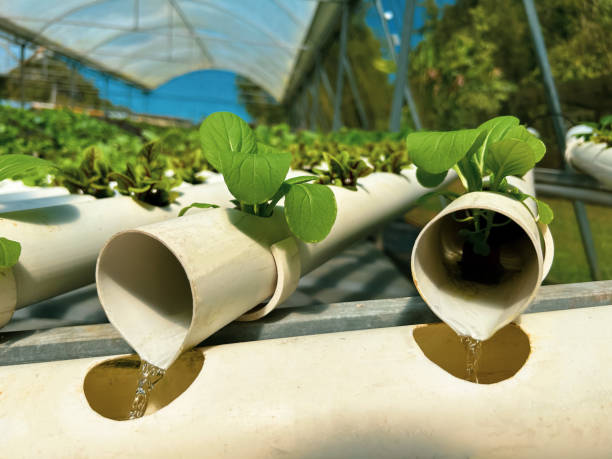
Nutrient Management: Nurturing Your Plants with the Right Balance of Fertilizers
Nutrient management plays a critical role in the overall health and development of plants. By providing your plants with the right balance of fertilizers, you can ensure they receive the necessary nutrients to thrive.
One important aspect of nutrient management is understanding the specific needs of your plants. Different plants have different nutritional requirements, and it’s crucial to tailor your fertilization approach accordingly. Conduct thorough research or consult with experts to determine the specific nutrient needs of your plants. This will enable you to select the appropriate fertilizers and ensure your plants receive the necessary elements for optimal growth.
In addition to understanding your plants’ nutrient requirements, it is important to consider the timing and application methods of fertilizers. Applying fertilizers at the right time can maximize their effectiveness. For instance, some plants may require a boost of nutrients during their active growth phases, while others may benefit from a more gradual or sustained release of fertilizers. Moreover, choosing the right application method, such as surface broadcasting or deep-root fertilization, can ensure efficient nutrient uptake by the plants. By carefully considering these factors, you can effectively manage the nutrients available to your plants, promoting their overall health and vitality.
Pest Prevention and Management: Safeguarding Your Plants Against Common Pests
Pests can wreak havoc on your beloved plants, causing damage to leaves, stems, and even the root system. It is crucial to implement effective pest prevention and management strategies to safeguard the health of your plants. One of the most important steps in pest prevention is proper identification. By closely monitoring your plants and being familiar with common pests, you can quickly detect any signs of infestation and take swift action. Additionally, maintaining a clean and well-organized garden can help deter pests from establishing a foothold. Regularly remove any fallen leaves, debris, or dead plant material, as these can serve as breeding grounds for pests. Additionally, consider implementing physical barriers such as nets or fences to protect your plants from potential intruders.
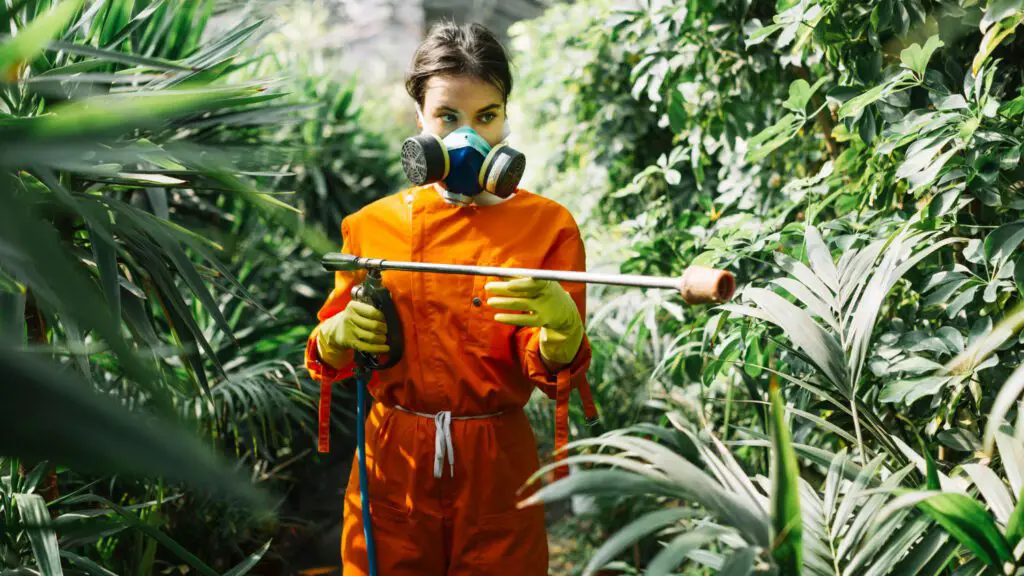
Pruning and Trimming: Enhancing Growth and Promoting Healthy Branching
Pruning and trimming are essential gardening practices that can greatly benefit the growth and development of your plants. By selectively removing specific branches or stems, you can enhance the overall shape and structure of your plants, leading to healthier branching patterns.
One of the main purposes of pruning is to promote the growth of new, stronger branches. By removing weak or diseased branches, you allow the plant to redirect its energy towards the development of new shoots that are better equipped to withstand environmental stressors. Additionally, pruning can also increase air circulation within the plant, reducing the risk of fungal diseases and improving overall plant health.
When it comes to trimming, it is important to remove any dead or dying foliage. These lifeless parts not only take away from the aesthetic appeal of your plants but can also serve as breeding grounds for pests and diseases. By promptly removing these damaged areas, you prevent the spread of harmful pathogens and facilitate the growth of new, healthy foliage.
Remember, pruning and trimming should be done with caution and precision. Improper techniques or excessive pruning can harm your plants rather than benefit them. It is crucial to understand the specific requirements of each plant species and to follow the appropriate pruning guidelines. In doing so, you can ensure that your plants thrive and flourish, resulting in a beautiful and vibrant garden.
Monitoring Light Exposure: Optimizing the Amount of Sunlight Your Plants Receive
One of the vital factors in ensuring the healthy growth of your plants is monitoring their exposure to light. Just like humans, plants require an optimal amount of sunlight to thrive and reach their full potential. Understanding the needs of different plant species and how they respond to varying levels of light is crucial for creating the ideal growing environment.
When it comes to monitoring light exposure, there are a few essential factors to consider. Firstly, it is important to understand that not all plants require the same amount of sunlight. Some plants, like succulents, thrive in direct sunlight, while others, such as ferns, prefer shade or indirect light. Therefore, it is crucial to research the specific light requirements of each plant in your care and place them accordingly in your garden or indoor space.
In addition to the duration, intensity, and direction of sunlight, it is also important to consider any obstructions or barriers that may prevent your plants from receiving adequate light. This could include tall trees or buildings that cast shadows, or even nearby structures that may reflect or absorb sunlight. By regularly monitoring the light exposure and making any necessary adjustments, you can ensure that your plants receive the optimal amount of sunlight for their healthy growth and development.
Soil Health and Maintenance: Ensuring Proper Nutrient Absorption and Drainage
Soil health plays a crucial role in the overall growth and development of plants. Proper nutrient absorption and drainage are essential factors that contribute to the vitality of plant life. Ensuring that plants have access to the right balance of nutrients and moisture can significantly impact their health and productivity.
Nutrient absorption is a fundamental process that occurs in the roots of plants. It involves the uptake of essential elements such as nitrogen, phosphorus, and potassium, as well as various micronutrients. These nutrients are necessary for various plant functions, including photosynthesis, growth, and defense against diseases and pests. Ensuring that the soil has an adequate supply of these nutrients is essential to support healthy plant growth.
In addition to nutrient absorption, proper drainage is critical for maintaining soil health. Poorly drained soil can lead to waterlogging, which deprives plants of oxygen and can result in root rot and other detrimental conditions. On the other hand, excessive drainage can cause rapid water loss and lead to dry and nutrient-deprived soil. Striking the right balance between moisture retention and drainage is crucial for providing plants with the optimal growing conditions they need to flourish.
By focusing on soil health and maintenance, gardeners can promote proper nutrient absorption and drainage, creating an environment where plants can thrive. Implementing techniques such as regular soil testing, adding organic matter, and adjusting irrigation practices can help ensure that plants receive the necessary nutrients and water for healthy growth.
| Aspect | Description |
|---|---|
| Soil Testing | Regularly test the soil pH and nutrient levels to determine its composition and identify any deficiencies or imbalances in nutrients. |
| pH Adjustment | Adjust the soil pH using amendments such as lime to optimize nutrient availability for plants. Aim for a pH level appropriate for the specific plants being grown. |
| Organic Matter Addition | Incorporate organic matter like compost, aged manure, or mulch into the soil to improve its structure, water retention, and nutrient-holding capacity. |
| Proper Watering | Water the soil adequately to ensure plants receive sufficient moisture without waterlogging. Maintain consistent moisture levels to facilitate nutrient uptake. |
| Mulching | Apply mulch to the soil surface to conserve moisture, regulate soil temperature, and prevent nutrient leaching and erosion. Choose organic mulches like straw or wood chips. |
| Soil Aeration | Aerating the soil helps improve drainage, oxygenation, and root development. Use aeration tools like garden forks or mechanical aerators to loosen compacted soil. |
| Cover Crops | Plant cover crops during off-seasons to protect the soil, prevent erosion, and add organic matter when tilled under. Cover crops also enhance soil structure and nutrient retention. |
| Drainage Improvement | Ensure proper drainage by amending heavy clay soils with materials like sand or perlite to improve drainage and prevent waterlogging. Install drainage systems if necessary. |
| Crop Rotation | Practice crop rotation to prevent nutrient depletion and soilborne diseases. Rotating crops helps maintain soil fertility and balance nutrient uptake by different plant types. |
| Monitoring and Adjustment | Monitor plant health and soil conditions regularly, adjusting nutrient applications and management practices based on plant responses and soil test results. |
Troubleshooting Common Plant Problems: Identifying and Addressing Issues Promptly
Identifying and addressing plant problems in a timely manner is crucial to maintaining a healthy and thriving garden. As a gardener, it is important to be diligent in observing your plants for any signs of distress or abnormalities. An early detection and intervention can prevent the spread of diseases, mitigate damage caused by pests, and safeguard the overall well-being of your plants.
One common issue that gardeners often encounter is yellowing leaves. This can be indicative of various problems such as nutrient deficiencies, overwatering, or pest infestations. To accurately diagnose the issue, you need to closely examine the affected leaves, taking note of any patterns or accompanying symptoms. Are the yellowed leaves uniformly discolored or are the edges turning brown? Is there any evidence of pests or fungal growth? By answering these questions and considering the specific needs of your plant, you can determine the appropriate course of action. Whether it involves adjusting your watering schedule, providing additional nutrients, or implementing pest control measures, swift and targeted intervention can help restore your plant’s health.
Another common issue that gardeners face is wilting plants. This can occur as a result of factors such as inadequate watering, root rot, or extreme temperatures. When you notice wilting, examine the soil moisture levels to determine whether underwatering or overwatering is the culprit. Additionally, check the roots for any signs of decay or damage. If root rot is present, it is essential to act swiftly to prevent further complications. Adjusting your watering routine, improving drainage, and providing suitable environmental conditions are a few steps you can take to revive your wilted plants.
In conclusion, troubleshooting plant problems requires careful observation and a systematic approach. By being vigilant and proactive in identifying and addressing issues promptly, you can maintain a healthy garden and ensure the ongoing success of your plants.
Propagation Techniques: Expanding Your Plant Collection through Successful Propagation
Propagation techniques offer gardening enthusiasts the opportunity to expand their plant collections through successful reproduction. By utilizing various methods such as cuttings, divisions, and seed propagation, plant enthusiasts can multiply their favorite plants with ease.
One popular propagation technique is using stem cuttings. This involves carefully selecting a healthy stem from the mother plant and cutting it just below a node, which is where new roots will emerge. By placing the cutting in a suitable propagation medium and providing the right conditions, new roots will develop, resulting in the formation of a new plant. This method is particularly useful for plants that do not produce viable seeds or can be challenging to propagate through other means.
Another technique worth exploring is division. This involves splitting a mature plant into multiple sections, each with its own root system. This method works well for plants that naturally produce offsets or have a clumping growth habit. Divisions are commonly used for perennials like Hostas, daylilies, and ornamental grasses. By carefully separating these clumps and replanting them, gardeners can effectively increase the number of plants in their collection.
Successful plant propagation relies on understanding the specific needs of each species and following proper techniques. With patience, practice, and a bit of experimentation, gardeners can enjoy the satisfaction of growing their plant collection while preserving the unique characteristics of their favorite specimens. So, whether you’re a seasoned gardener looking to expand your collection or a novice exploring the world of propagation for the first time, these techniques offer a rewarding and fulfilling journey into the world of plant propagation.
Repotting and Transplanting: Promoting Healthy Root Growth and Preventing Overcrowding
Repotting and transplanting are important practices in promoting healthy root growth and preventing overcrowding in your plants. Over time, plants can outgrow their current containers, leading to root-bound conditions where the roots become tightly packed and restricted. This can inhibit the plant’s ability to absorb nutrients and water, resulting in stunted growth and overall poor health.
When it comes to repotting, timing is crucial. It is recommended to repot your plants when they are actively growing and not during their dormant phase. This allows the plant to recover quickly and adjust to its new environment. Before repotting, prepare a new container with fresh potting soil that is appropriate for your plant’s needs. Gently remove the plant from its current pot, taking care not to damage the roots. Inspect the roots and remove any dead or rotted sections. Place the plant in the new container, ensuring it is positioned at the same depth as before, and then add the fresh potting soil, pressing it lightly to eliminate air pockets. Finally, water the plant thoroughly to help settle the soil and provide hydration to the newly repotted plant.
Transplanting, on the other hand, involves moving a plant from one location to another, such as from an outdoor garden to an indoor container or vice versa. This can be done to protect the plant from extreme weather conditions, provide optimal growing conditions, or simply to change its positioning for aesthetic purposes. When transplanting, it is important to consider the specific needs of your plant, such as light requirements and temperature preferences. Dig a hole in the new location that is large enough for the plant’s roots to spread out comfortably. Gently remove the plant from its current location, shaking off any excess soil, and place it in the prepared hole. Fill in the surrounding area with soil and water thoroughly to help the plant establish itself in its new home. Transplant shock can be minimized by ensuring the plant receives adequate water and care during the initial period after transplantation.
• Repotting and transplanting are essential for promoting healthy root growth and preventing overcrowding in plants.
• Over time, plants can outgrow their containers, leading to root-bound conditions that restrict nutrient absorption and water uptake.
• Timing is crucial when repotting; it’s best to do it during the plant’s active growing phase rather than its dormant period.
• Before repotting, prepare a new container with fresh potting soil suitable for your plant’s needs.
• Carefully remove the plant from its current pot, inspect the roots, and eliminate any dead or rotted sections.
• Place the plant in the new container at the same depth as before and add fresh potting soil while lightly pressing it to eliminate air pockets.
• Thoroughly water the newly repotted plant to settle the soil and provide hydration.
Transplanting:
– Transplanting involves moving a plant from one location to another for various reasons such as protection from extreme weather or aesthetic purposes.
– Consider your specific plant’s needs regarding light requirements and temperature preferences before transplanting.
– Dig a hole in the new location that allows enough space for the roots to spread comfortably.
– Gently remove the plant from its current location, shaking off excess soil, then place it in the prepared hole.
– Fill in surrounding areas with soil and water thoroughly to help establish the transplanted plant.
– Minimize transplant shock by providing adequate water and care during this initial period after transplantation.
Incorporating Plant Care into Your Routine: Making Plant Care a Seamless Part of Your Life.
Incorporating plant care into your routine is essential for maintaining the health and vitality of your plants. By making plant care a seamless part of your life, you not only ensure the longevity of your green friends, but you also create a nurturing environment that supports their growth and development. Here are a few tips to help you seamlessly integrate plant care into your daily routine.
Firstly, establish a regular watering schedule that suits the needs of your plants. Understanding the specific water requirements of each plant is crucial, as overwatering or underwatering can lead to the decline of your precious foliage. Consider factors such as the plant’s species, size, and environment when determining the frequency and amount of water it needs. Furthermore, always monitor the moisture levels of the soil and adjust your watering routine accordingly.
Additionally, set aside dedicated time for tasks such as pruning, trimming, and inspecting your plants for any signs of pests or disease. Regularly removing dead or damaged foliage promotes healthy growth and prevents the spread of infections. Stay vigilant and address any issues promptly to keep your plants thriving. Creating a routine for these maintenance tasks will help you stay organized and ensure that your plants receive the care they need.
By incorporating these practices into your daily routine, you’ll not only enjoy the benefits of vibrant and flourishing plants but also cultivate a deeper connection with the natural world around you. Find joy in the process of tending to your plants, and let it become a rewarding and fulfilling part of your everyday life.
How often should I water my plants?
The frequency of watering depends on various factors such as the type of plant, its size, environmental conditions, and the type of soil. It’s best to monitor the moisture level of the soil and water your plants when the top inch of soil feels dry.
What are some signs of overwatering my plants?
Overwatering can lead to root rot and other issues. Signs of overwatering include yellowing or wilting leaves, mushy or discolored roots, and a foul smell coming from the soil.
How can I determine if my plants are receiving enough sunlight?
Different plants have different light requirements. You can determine if your plants are receiving enough sunlight by observing their growth and appearance. If they have leggy or elongated stems, pale coloration, or are not flowering, it may indicate insufficient light.
How do I know if my plants are lacking nutrients?
Signs of nutrient deficiency can vary depending on the specific nutrient. However, common indications include yellowing or browning of leaves, stunted growth, and poor overall health of the plant.
What are some commonly encountered pests and how can I prevent them?
Common pests include aphids, spider mites, mealybugs, and whiteflies. To prevent infestations, regularly inspect your plants, keep them clean, provide proper air circulation, and consider using organic pest control methods such as neem oil or insecticidal soap.
How often should I prune or trim my plants?
The frequency of pruning or trimming depends on the growth habit of the plant. Generally, you should prune or trim your plants when they become leggy, have dead or diseased branches, or require shaping.
When is the best time to repot or transplant my plants?
The best time to repot or transplant your plants is generally during their active growth period, which is usually in the spring or early summer. However, it’s important to research the specific needs of your plant as some may have different preferences.
How can I propagate my plants successfully?
Propagation methods vary depending on the plant species. Common techniques include stem cuttings, leaf cuttings, division, and seed propagation. Research the specific needs of your plant to determine the most suitable propagation method.
How can I incorporate plant care into my daily routine?
To make plant care a seamless part of your life, you can set reminders for watering, pruning, and other tasks. Additionally, consider grouping plants with similar care requirements together, which can streamline your routine by allowing you to care for them collectively.

Ankit Garg is a seasoned writer at South El Monte Hydroponics, blending his passion for agriculture with a penchant for storytelling. With a degree in Agricultural Sciences from a prestigious institution, Ankit’s expertise lies in hydroponics, sustainable farming, and innovative cultivation techniques. His keen interest in exploring the intersection of technology and agriculture has led him to delve deep into the realm of hydroponic farming, where he thrives in uncovering the latest advancements and sharing insights through his engaging prose. Ankit’s dedication to promoting eco-friendly and efficient farming practices through his writing has earned him recognition within the agricultural community and beyond.


